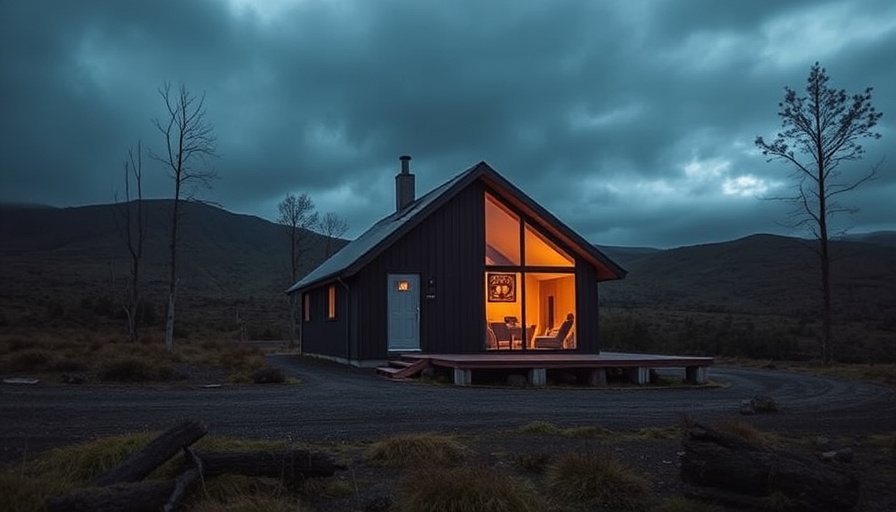
Exploring the Benefits of an Off-Grid Cabin for Digital Nomads
As remote work continues to shape our professional lives, many digital nomads are seeking inspiration from innovative designs that promote comfort and efficiency. The recently discussed off-grid cabin by Anya Moryoussef Architect in Ontario exemplifies how thoughtful architecture can create the perfect workspace, even in the most dramatic settings.
Why Off-Grid Living Appeals to Remote Workers
The allure of off-grid living goes beyond sustainable energy—it's about creating an environment that encourages productivity and well-being. Nestled in the heart of nature, the black-stained cabin not only blends with its surroundings but also minimizes distractions. Commenters on Dezeen remarked on the cabin's "moody and dramatic" aesthetic, suggesting that the ambiance may inspire creativity and focus, essential traits for remote workers.
Creating a Cozy Workspace: Balancing Aesthetics and Function
A major point of discussion surrounding the cabin design was its interior. While praised for its aesthetics, some argued that it could benefit from a more "cabin cozy" ambiance instead of a sterile, factory-like feel. For digital nomads, the workspace should be both visually appealing and functional. Incorporating warm finishes, personal touches, and ergonomic furniture can enhance both comfort and productivity in such environments.
Understanding Ergonomics in Remote Work Environments
It's vital to create an ergonomic workspace, especially in unconventional settings like cabins. Good posture and proper workspace layout can prevent discomfort and fatigue during long working hours. Ergonomic solutions include adjustable chairs, appropriately sized desks, and supportive accessories like keyboard trays and monitor stands. Those designing their own spaces—whether in a cabin or a city apartment—should consider these aspects to support their health and well-being.
Connection to Nature: Mental Health and Productivity
Numerous studies highlight the mental health benefits of spending time in nature, which can lead to increased productivity and creativity. Off-grid cabins, such as the one in Ontario, allow digital nomads to immerse themselves in a natural setting, enhancing their mood and focus. This connection to the environment can be vital in combating burnout and maintaining a healthy work-life balance.
Practical Insights for Cabin Design
When planning a workspace in a cabin setting, consider elements like natural lighting, ventilation, and acoustics. Large windows can bring in light and views, promoting a positive outlook. Furthermore, sound insulation may be crucial in maintaining concentration in serene surroundings. These practical aspects contribute to a workspace that not only looks good but functions efficiently, inviting innovative ideas.
Future Trends in Off-Grid Architecture
As the trend of remote work grows, we can expect more architectural innovations focused on off-grid designs. These cabins or similar structures will likely emphasize sustainability while providing the necessary comforts for work. The discussion around this Ontario cabin serves as a valuable starting point in imagining how nature and architecture can collaboratively enhance the work-from-anywhere experience.
Whether you're contemplating your own off-grid workspace or simply looking to enhance your existing remote job setup, consider how these design elements might work for you. You'll find that a thoughtful approach to your environment can lead to greater satisfaction and productivity in your professional life.
Call to Action: If you're ready to design your ideal workspace, why not explore the benefits of creating a cozy, ergonomic cabin retreat? Embrace the opportunity to bring your work into a nature-filled space where comfort and functionality meet.
 Add Row
Add Row  Add
Add 




Write A Comment